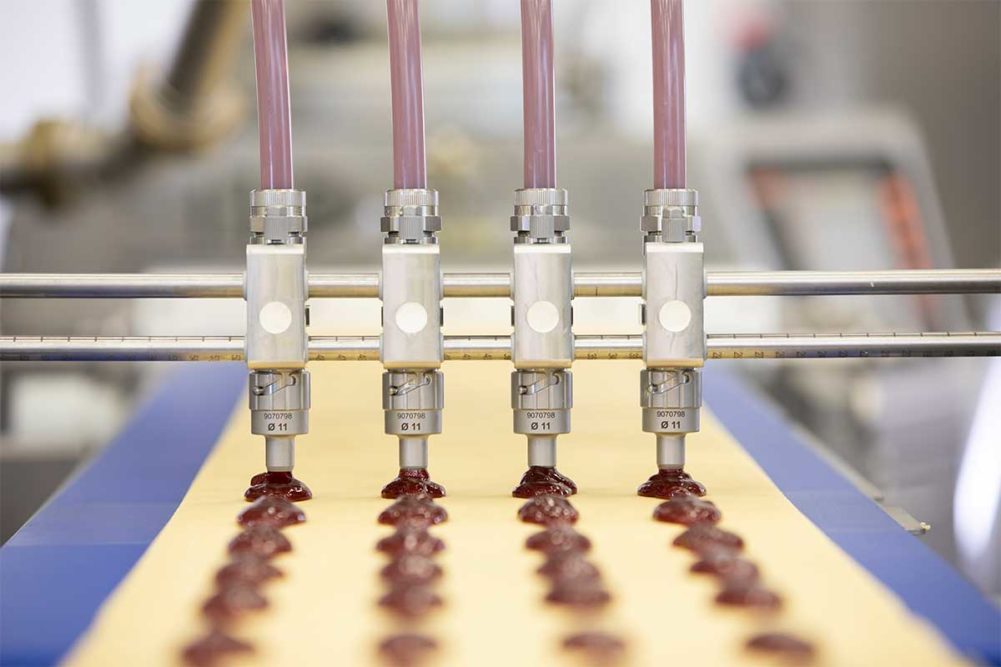Laminated pastries are delicate, so manufacturers must ensure the depositing of fillings won’t result in product leakage or damage the laminated dough and any inclusions in the filling.
“Pastry fillings either tend to be chunky or smooth, and both viscosities require handling with care,” said Sonia Bal, director of marketing, Unifiller. “Specialized depositor heads or nozzles, large passages and openings, and adjustable depositing speeds are innovative mechanisms to prevent damage or distortion of fillings.”
The new valveless depositing system from Handtmann is well suited for laminating lines, using servo-controlled spot depositing reverse suction to create precise portions, said Joe Alameno, forming and depositing manager.
“[The system] has excellent spot depositing placement for cut products that enables closed ends and eliminates the leakage common to open ends,” he said.
Depositing speed and precision continues to increase, observed David Moline, president, Moline Machinery, allowing for highly uniform products at a greater volume. Bakers must carefully evaluate the unique depositing requirements of their products before choosing the right piece of equipment for their line, he emphasized.
“Is a continuous filling required? What does the end product look like? Sometimes you want open-ended products where the filling is showing,” he said. “Other times you want the filling to be fully encapsulated with dough. And that varies in the equipment that’s required for depositing.”
Fritsch’s Multifiller S for medium-sized lines accurately deposits different fillings with variable viscosities and particle sizes, noted Stefan Praller, senior director, customer experience, Fritsch, a Multivac Group company.
“On our industrial lines with a higher speed, the precise positioning of the filling spot is ensured by a synchronized movement,” he said.
This article is an excerpt from the February 2024 issue of Baking & Snack. To read the entire feature on Sweet Goods Processing, click here.





